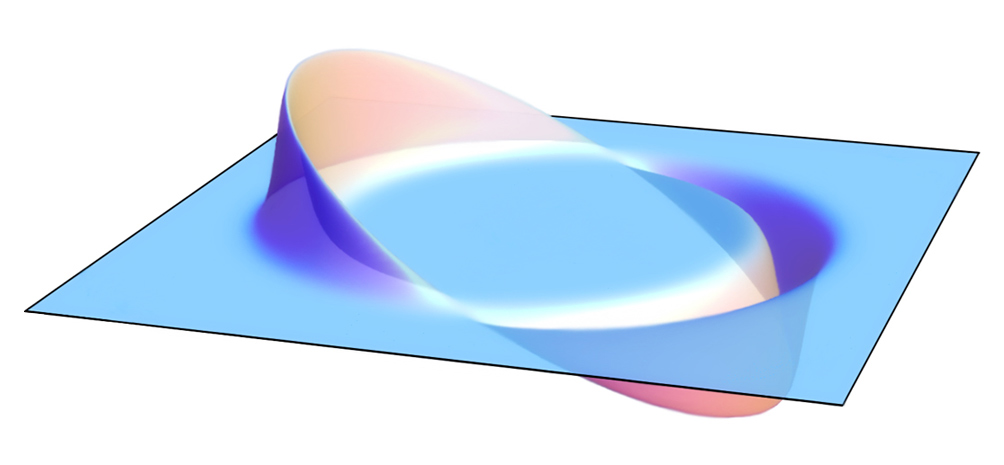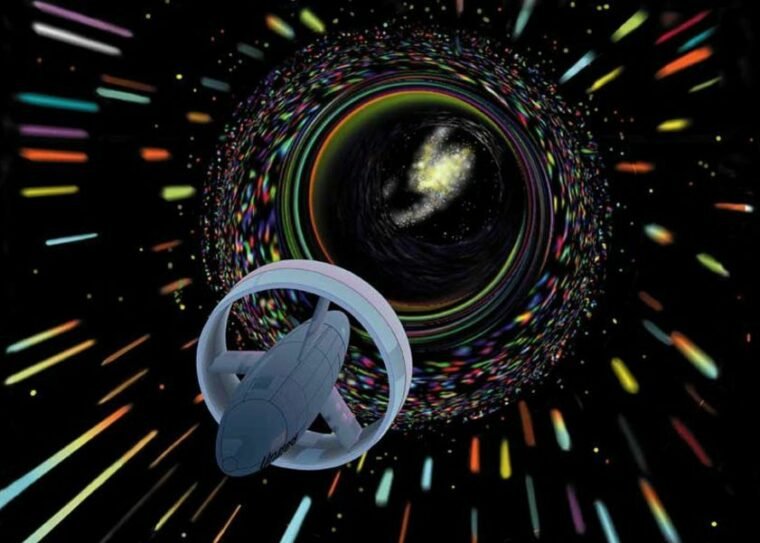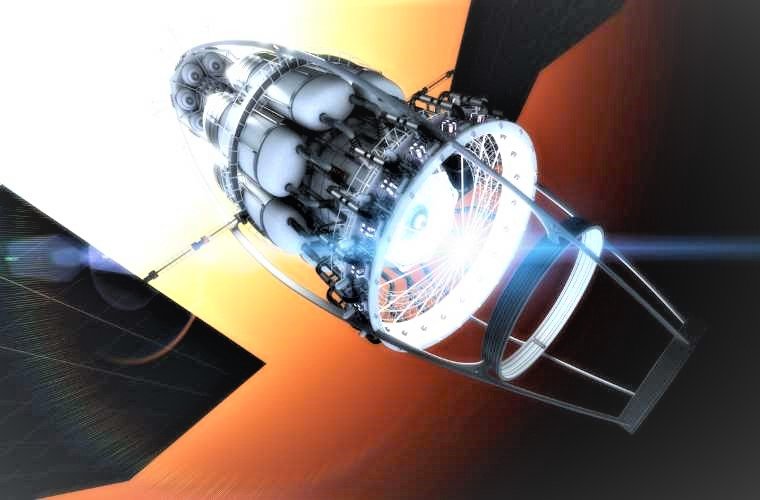After appearing for decades in science fiction, then moving into an actual theory, a new patent for an updated warp drive was published last year to no fanfare. Like many other false starts in cutting-edge research, the patent may represent the next step in the expanding theory, or it could mean the practical, real-world design of a functioning warp drive is on the horizon.
Background: How to Bend Space-Time with A Warp Drive
After first publishing his groundbreaking 1994 warp drive concept in the journal Classical and Quantum Gravity, Mexican Mathematician and Physicist Miguel Alcubierre received significant positive and negative feedback. Most applauded his solution, which did indeed appear to create a working theory on how a warp drive might allow faster than light travel without violating the laws of physics. In contrast, others zeroed in on the incredible amount of energy needed to propel his theoretical spacecraft.
The warp drive was further refined in 2007 by engineer H. David Froning Jr., who, among other things, previously worked for the U.S. Air Force, Boeing, and McDonnell Douglas. He published those refinements in 2008 and later released a 2019 book on his research.
Both theories took a giant leap forward in 2011 when a paper published by NASA scientist Harold G. “Sonny” White further improved upon Alcubierre’s designs, dramatically reducing the amount of exotic matter needed to fuel the hypothetical drive from a Jupiter sized amount to something akin to the size of the NASA Voyager 1 probe. While this is still a significant volume and well beyond our current ability to manufacture, this dramatic reduction in fuel requirements seems to indicate that a real-world warp drive may one day be feasible.
One practical attempt to build a drive is being made by Nebraska University Adjunct Professor David Pares and his company, Space Warp Dynamics. He posted a recent series of tests to YouTube; however, his company’s Indiegogo campaign to build such a device has only reached 3% of the target goal. Their website and Facebook pages show only incremental advancements since. Interestingly, the company’s website notes that Pares was “Inspired by his own craft sighting, at the age of 16,” although no other details of this sighting are provided. Apart from that, little is known about this project.
Analysis: The New 2020 Warp Drive Patent
In April of 2020, two engineers from Chicago, Jessica Gallanis and Eytan Halm Suchard published a patent application for a drive using the updated Harold White designs. A device aptly named the Alcubierre-White Warp Drive. Barely a month into the COVID 19 shutdown, the patent’s publication seemed to sneak under the radar, with a lone report by Read Multiplex in December of 2020 (one that sits behind a paywall).
In the summary portion of the patent, Gallanis and Suchard explain how “the invention uses two Alcubierre gravitational walls to achieve a warp drive effect as means of propulsion while surrounding or enclosing a cavity or space where passengers can travel.”
This design is consistent with Alcubierre, whose solution they point out “suggested a method for changing the metric of space-time and creating a space-time warp bubble such that while from outside the bubble, the bubble can advance in superluminal speed, from within the bubble the speed is much lower than the speed of light.”
The patent also notes the work of Froning, who they say observed how, “if sufficient warping is achieved, ship speed is slower than light speed within the region that surrounds it-even if it is moving faster-than-light with respect to Earth.”
“I had never personally heard of the Alcubierre drive until 2013,” Suchard admitted on a two-hour telephone interview with The Debrief to discuss his device, how the design came about, and how realistic building his patented Warp Drive was.


A software engineer by trade, Suchard was working on handwriting and signature recognition software when he had a revelation that would lead to his patented design.
“It occurred to me that we should be able to describe all physical phenomena as geometry. And that space-time was merely an emergent property, which is diametrically opposed to [Albert] Einstein’s approach.”
The Israeli-born engineer said this revelation launched him into a more in-depth study of things like dark matter, loop theory, quantum gravity, and ultimately, to the idea of a warp drive.
“I first stumbled across Alcubierre in 2013,” Suchard explained, a discovery that led to him spending the next three years trying to rectify his new take on classical physics with Dr. White’s theory. “I knew from my own calculations that energy itself must create gravity, and by extension anti-gravity,” he said. “And that this had to be the solution to Alcubierre.”
By 2017, Suchard’s wife and fellow engineer Jessica Gallanis told him that his theoretical work was sound, and it was time to try to file a patent. Unfortunately, the first try was unsuccessful. “They wouldn’t take it,” he said of the response by the United States Patent and Trademark Office (USPTO). “I think they didn’t understand the physics.”
Suchard said he spent the next two years going back and forth with the USPTO until, in 2020, they finally made a concession. “By then, they did not refute the fact that the patent is based upon a valid working theory, but still said I would need a physical device to prove the physics.” As a result of this concession, they accepted the application, leading to the 2020 publication.


Outlook: Has History Been Made?
When asked where his patent will go from here, Suchard was particularly critical in his response. “I don’t trust anyone else to do the experiments,” he said, “because too many do them in the wrong way.” To do those experiments, Suchard also admits that his expertise is not enough. “I would need other physicists involved. An RF engineer, a materials scientist, and many others with expertise in [areas like] heat dissipation, x-rays, and other related fields.”
Suchard also noted the significant amount of funding needed for this research and that such funding is not presently on the horizon.
The Debrief reached out to Dr. Jason Cassibry, a professor at the Propulsion Research Center at the University of Alabama Huntsville. He, and one of his students, Joseph Agnew, a researcher at the Propulsion Research Center, explained that there were problems with Suchard’s theory.
Cassibry and Agnew told The Debrief in an email that the use of highly concentrated magnetic fields to create gravity wells is a common aspect of warp drive theory.
“I’ve seen a number of people try to relate high-frequency electrical oscillations to warp drive. Based on some of the papers I’ve looked at, there is indeed a relation between highly concentrated magnetic field energy, like in a huge solenoid, and a positive gravity well. But the amount of energy required to be detectable is quite large, and, although doable, that experiment has not been run yet,” Agnew explained.
Agnew explained that the biggest problem is the “‘negative energy or ‘anti-gravity well'” part of the system that makes it an Alcubierre drive and not just a gravity well. Both Agnew and Cassibry concurred that aspects of the patent did jive with previous warp drive models; however, since there was no experimental data, it would be impossible to determine if the drive would work.
“I’m skeptical,” Agnew stated, “since it cites as-yet-unobserved phenomena as its basis for operation.”
Dr. Cassibry echoed Agnew’s sentiment, adding, “I hope that someday, someone discloses an invention or a technology along with a demonstration of a real system, such as a video of a working propulsion system lifting itself off the ground, no strings attached. Short of that, experimental measurements, even on a subscale test, are highly valuable and encouraged. Short of experimental evidence, I will remain skeptical of any and all papers and patents.”
The Debrief reached out to the NASA Ames Research Center for comment from Dr. White on this potentially groundbreaking patent and any work he may still be doing in this field. Their representative told The Debrief that White retired from the organization last year. They also indicated that the warp mechanics program he ran at Ames is no longer in operation as it was shuttered at the same time he left.
The Debrief tried to contact Dr. Whte at his new venture, the Limitless Space Institute, which appears to be continuing his Warp Drive research. They did not respond to requests for comment.
The patent by Suchard and Gallanis is still awaiting approval, and it is an approval Suchard is not expecting any time soon. Still, he says, the theory is sound, and if he were able to put together the team of experts he envisions, he thinks building a warp drive may be possible. Like most potential breakthrough propulsion theories, Suchard’s take on energy and gravity is unique. Still, unlike Alcubierre and White, he has taken that theory to the next step with an actual patent application. Time will tell if it ever leads to the real thing, but the work by other researchers in the field and the improvements to Alcubierre’s original theory made along the way may mean that warp speed may be closer than we think.
Know of any other interesting patents that could re-shape the world? Contact tips@thedebrief.org.
Join us on Twitter or Facebook to weigh in and share your thoughts on this warp drive patent. You can also follow all the latest news and exciting feature content from The Debrief on Flipboard, Instagram, and don’t forget to subscribe to The Debrief YouTube Channel and check out The Official Debrief Podcast.

